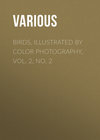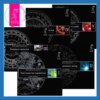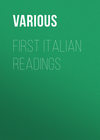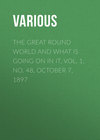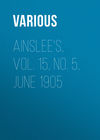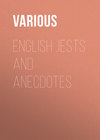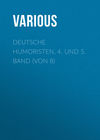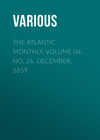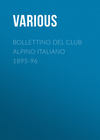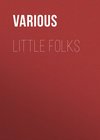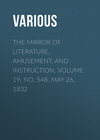Читать книгу: «Birds, Illustrated by Color Photography, Vol. 2, No. 2», страница 3
THE KENTUCKY WARBLER
Although this bird is called the Kentucky Warbler, we must not think he visits that state alone.
We find him all over eastern North America. And a beautiful bird he is.
As his name tells you he is one of a family of Warblers.
I told you somewhere else that the Finches are the largest family of birds. Next to them come the Warblers.
Turn back now and see how many Warblers have been pictured so far.
See if you can tell what things group them as a family. Notice their bills and feet.
This bird is usually found in the dense woods, especially where there are streams of water.
He is a good singer, and his song is very different from that of any of the other Warblers.
I once watched one of these birds – olive-green above and yellow beneath. His mate was on a nest near by and he was entertaining her with his song.
He kept it up over two hours, stopping only a few seconds between his songs. When I reached the spot with my field-glass I was attracted by his peculiar song. I don’t know how long he had been singing. I stayed and spent two hours with him and he showed no signs of stopping. He may be singing yet. I hope he is.
You see him here perched on a granite cliff. I suppose his nest is near by.
He makes it of twigs and rootlets, with several thicknesses of leaves. It is neatly lined with fine rootlets and you will always find it on or near the ground.
In the September and October number of “Birds” you will find several Warblers and Finches. Try to keep track of them and may be you can do as many others have done – tell the names of new birds that come along by their pictures which you have seen in “Birds.”
THE KENTUCKY WARBLER
BETWEEN sixty and seventy warblers are described by Davie in his “Nests and Eggs of North American Birds,” and the Kentucky Warbler is recognized as one of the most beautiful of the number, in its manners almost the counterpart of the Golden Crowned Thrush (soon to delight the eyes of the readers of Birds), though it is altogether a more conspicuous bird, both on account of its brilliant plumage and greater activity, the males being, during the season of nesting, very pugnacious, continually chasing one another about the woods. It lives near the ground, making its artfully concealed nest among the low herbage and feeding in the undergrowth, the male singing from some old log or low bush, his song recalling that of the Cardinal, though much weaker.
The ordinary note is a soft schip, somewhat like the common call of the Pewee. Considering its great abundance, says an observer, the nest of this charmer is very difficult to find; the female, he thought, must slyly leave the nest at the approach of an intruder, running beneath the herbage until a considerable distance from the nest, when, joined by her mate, the pair by their evident anxiety mislead the stranger as to its location.
It has been declared that no group of birds better deserves the epithet “pretty” than the Warblers. Tanagers are splendid, Humming Birds refulgent, others brilliant, gaudy, or magnificent, but Warblers alone are pretty.
The Warblers are migratory birds, the majority of them passing rapidly across the United States in spring on the way to their northern nesting grounds, and in autumn to their winter residence within the tropics. When the apple trees bloom they revel among the flowers, vieing in activity and numbers with the bees; “now probing the recesses of a blossom for an insect, then darting to another, where, poised daintily upon a slender twig, or suspended from it, they explore hastily but carefully for another morsel. Every movement is the personification of nervous activity, as if the time for their journey was short; as, indeed, appears to be the case, for two or three days at most suffice some species in a single locality.”
We recently saw a letter from a gentleman living at Lake Geneva, in which he referred with enthusiasm to Birds, because it had enabled him to identify a bird which he had often seen in the apple trees among the blossoms, particularly the present season, with which he was unacquainted by name. It was the Orchard Oriole, and he was glad to have a directory of nature which would enable him to add to his knowledge and correct errors of observation. The idea is a capitol one, and the beautiful Kentucky Warbler, unknown to many who see it often, may be recognized in the same way by residents of southern Indiana and Illinois, Kansas, some localities in Ohio, particularly in the southwestern portion, in parts of New York and New Jersey, in the District of Columbia, and in North Carolina. It has not heretofore been possible, even with the best painted specimens of birds in the hand, to satisfactorily identify the pretty creatures, but with Birds as a companion, which may readily be consulted, the student cannot be led into error.
THE RED BREASTED MERGANSER
WHY this duck should be called red-breasted is not at first apparent, as at a distance the color can not be distinguished, but seen near, the reason is plain. It is a common bird in the United States in winter, where it is found in suitable localities in the months of May and June. It is also a resident of the far north, breeding abundantly in Newfoundland, Labrador, Greenland, and Iceland. It is liberally supplied with names, as Red-Breasted Goosander or Sheldrake, Garbill, Sea Robin, etc.
There is a difference in opinion as to the nesting habits of the Red-Breast, some authorities claiming that, like the Wood Duck, the nest is placed in the cavity of a tree, others that it is usually found on the ground among brushwood, surrounded with tall grasses and at a short distance from water. Davie says that most generally it is concealed by a projecting rock or other object, the nest being made of leaves and mosses, lined with feathers and down, which are plucked from the breast of the bird. The observers are all probably correct, the bird adapting itself to the situation.
Fish is the chief diet of the Merganser, for which reason its flesh is rank and unpalatable. The Bird’s appetite is insatiable, devouring its food in such quantities that it has frequently to disgorge several times before it is able to rise from the water. This Duck can swallow fishes six or seven inches in length, and will attempt to swallow those of a larger size, choking in the effort.
The term Merganser is derived from the plan of the bird’s bill, which is furnished with saw teeth fitting into each other.
The eggs of the Red-Breasted Merganser vary from six to twelve, are oval in shape, and are of a yellowish or reddish-drab, sometimes a dull buffy-green.
You may have seen pictures of this Duck, which frequently figures in dining rooms on the ornamental panels of stuffed game birds, but none which could cause you to remember its life-like appearance. You here see before you an actual Red-Breasted Merganser.

